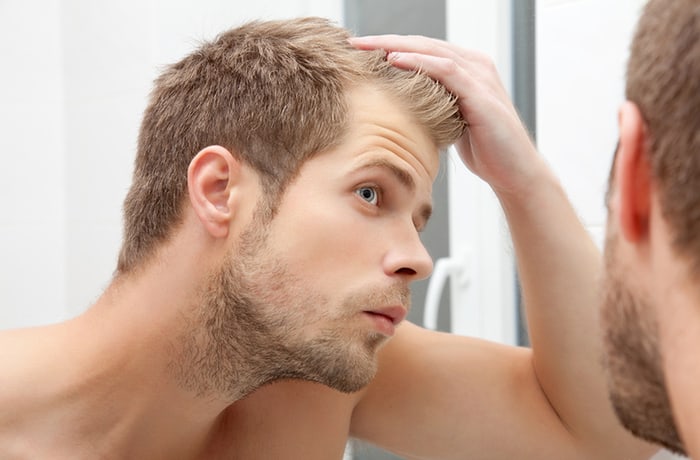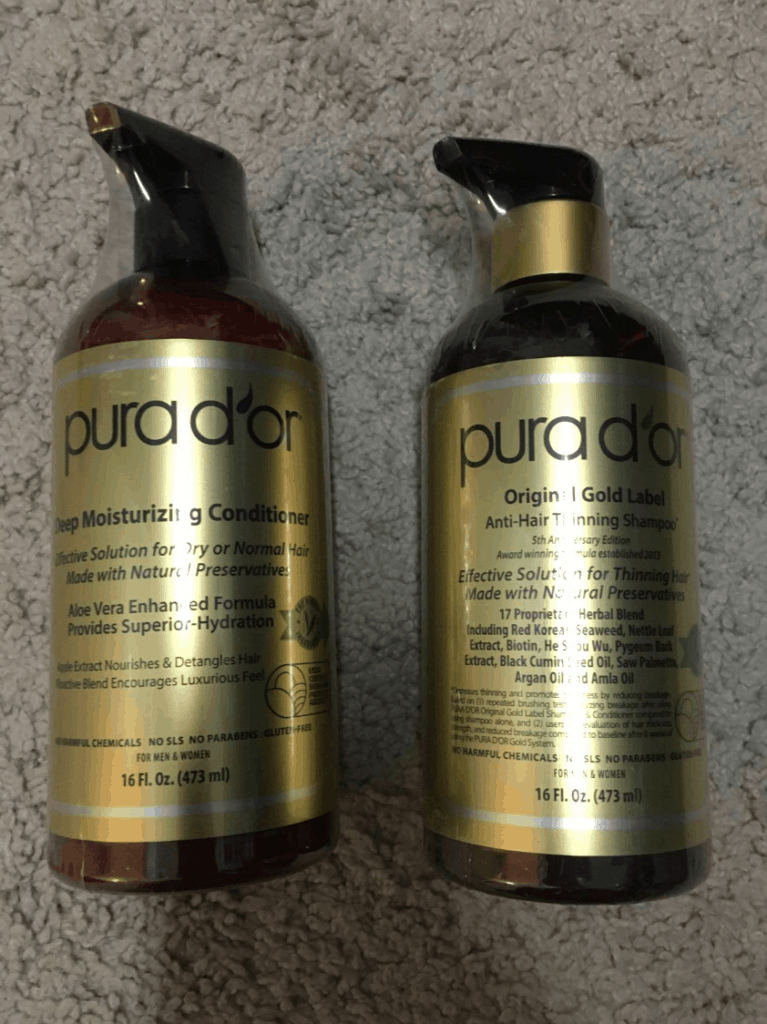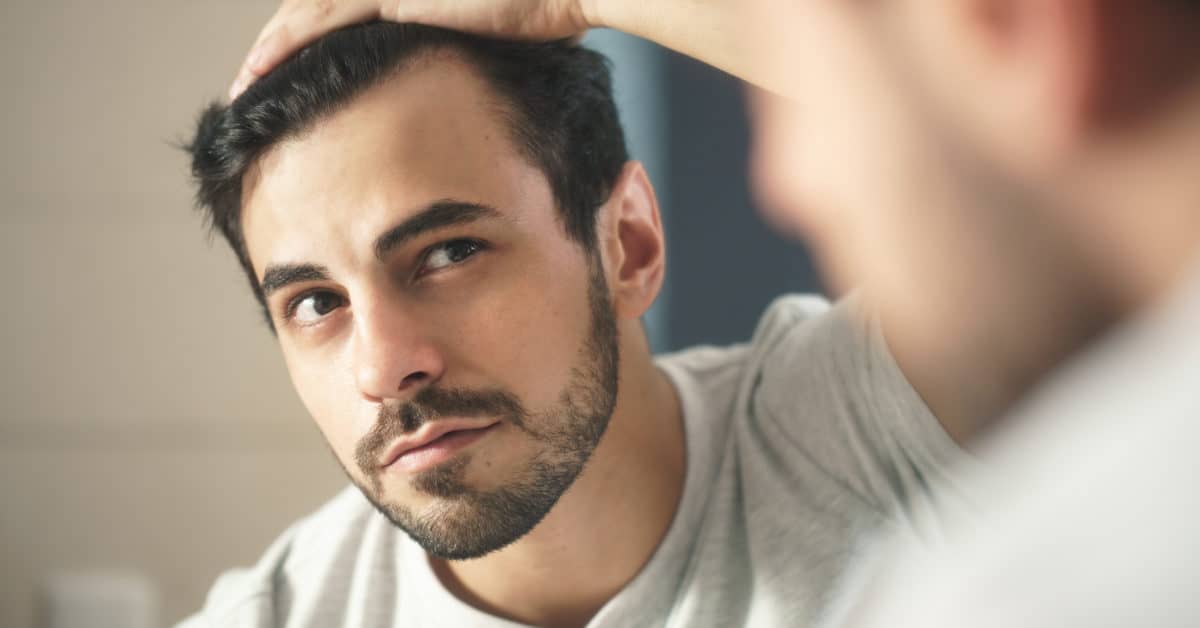It’s well known that men grow hair on more parts of the body than women do, and that men’s head hair tends to thin out with age. Baldness is more common in men than in women. Thickness of hair is determined by genetic factors and by hair color. Someone with blonde hair, for example, will have thinner hair than a brunette.
So, is men’s hair thicker than women’s hair? The answer is that hair thickness cannot be determined merely by gender. However, there have been studies which concluded that men’s hair is generally thicker than women’s hair, and that male hair grows faster than women. However, it is important to note that even more studies have been inconclusive about which gender has thicker hair.
There are, however, some studies that do show actual differences in hair thickness based on hair color. For example, people with red hair are believed to have thicker hair, while at the same time redheads have less hair in general, about 90,000 strands compared to about 110,000 strands for blonde hair and 140,000 strands of hair for people with darker hair.
People with blonde hair have thinner hair than people with brown or black hair. We can say that, in general, the darker one’s hair, the thicker it is.
The thickness of human hair is based on several factors and knowing these can help you find hair products that will make hair thicker and healthier looking.
Table of Contents
How Thick is the Average Human Hair?
Factors including weather conditions and the location of the hair on the body will determine the thickness of human hair. Genetics play an important role in determining the texture of hair. Both males and females have vellus hair, which is hair that grows soft, is thin, and appears over most of the body except for behind the ears, the lips, palms of the hands and a few other areas. The hair’s density – how many hair follicles that are close to each other and determine hair thickness, varies from person to person, and is not based on the sex of a person.
There is no exact number, or even average, of human hair thickness. The average width, or thickness of human hair is measured in micrometers instead of millimeters. And the millimeter thickness is related to the natural color of a person’s hair. The thinnest hair, or “flaxen” hair, is yellowish-grey and has an average width of 17 to 50 micrometers. At the other end of the spectrum is black hair, which has a thickness between 56 and 180 micrometers.
It’s believed that darker hair contains more melanin than light hair. Melanin, known to determine skin color, also controls the thickness of hair.
Determining Your Hair Type and Thickness
There are five important ways to measure and determine hair type. Knowing these can help you make better decisions when styling your hair or when buying hair care products like shampoos, conditioners and oils.

Hair Diameter
It is impossible to tell your hair’s diameter just by looking at it in a mirror. But you can determine your hair diameter on your own without consulting a hair care specialist.
Hair is classified as being either fine, medium or coarse. Fine hair corresponds with thinner hair while coarse hair is generally much thicker.
To find out your hair diameter, take a single hair between your thumb and forefinger. Rub the hair back and forth. If you don’t feel the hair between the fingers, then you can conclude you have fine hair.
If you can feel the hair when rubbing it, then you have medium diameter hair. Finally, if the strand feels long and thick, then your hair is coarse.
Remember that hair density and hair diameter are different. A person with fine hair can have more hair than someone with thick or coarse hair. The hair diameter test only measures each individual strand of hair, not the hair’s thickness.
Texture and curliness of hair
Although your experience with your hair already gives you a sense of its texture and waviness, be aware that texture changes naturally as we age. Certain medications and the use of birth control can also impact hair’s curliness and thickness.
Hair should be allowed to air dry about once every week or so, so the natural oils of the hair can remain intact, and you can avoid the damage of heat styling by allowing hair to air dry. In addition it becomes easier to determine your hair’s natural curl pattern by observing it after it dries naturally.

Hair Density
As we mentioned above, hair density and hair thickness are not the same thing. Density relates to how many hair follicles there are in every square inch of the scalp. Each hair that grows out from the hair follicle can be thin and fine or be coarse and thick.
One of the best ways to determine hair density is to grab a clump of your hair on the side of the head and pull it slightly. Take a look at your scalp to see how much of it is visible. The less scalp you can see, the denser your hair is. On the other hand, if you can see some scalp, it means you have less hair density.
Can I make thin hair strands thicker?
Often, “fine” hair is marketed along with the words, “thin,” “limp,” or “lifeless.” This is, of course, the way manufacturers get us to buy their products. Yet there never has been nor is there anything unattractive about fine hair. Often, people with thinner hair actually have more density to their hair than people with thicker hair. That means thinner-haired people can have more total hair strands than people with thicker hair.
Blondes generally have hair that is the finest, and the darker the hair color, the coarser hair becomes. No matter what hair type you have, everyone, whether their hair is thin or thick, wants hair that has volume to it.
There are many products on the market that can make thinner hair thicker-looking, and these include oils, sprays, foams and mousses. The better quality hair styling products not only give volume and help make fine hair more textured and curlier, but they also protect the hair root in the process. I recommend using a thickening shampoo. These are generally inexpensive (compared to professional medical treatments) and can produce good results if used over time.
I’ve tried something like THIS before. I was actually pretty pleased with the results. I notice I don’t shed my hair as much and after about a month of use, I was hooked. I picked it up on Amazon.

Besides using hair styling products, there are natural approaches to helping the hair become thicker. Year after year, we are deluged with new studies that link stress and anxiety to medical conditions and general health. Stress plays a giant role in every facet of life, including our appearance, and hair health. Stress can change our complexion and impact hair growth on our heads and bodies. When feeling stressed, avoid pulling split ends or pulling your hair through your fingers.
Protein is rich in omega-3 and omega-6. These fatty acids have been linked directly to better hair gloss and overall health.
Vitamins closely connected to hair health are vitamin B12 and vitamin D. Vitamins are so important that low levels of B12 or D can result in slower growing hair. Even worse, vitamin deficiencies have been linked to thinning hair, or hair that becomes less dense. If you notice your hair appears thinner, and you haven’t styled it differently, you can get a blood test from your doctor to see if there are deficiencies. Low levels of B12 and D can be remedied easily by taking vitamin supplements.
Changes in the body can impact hair thickness and density. If you’ve noticed you’re gaining weight, increased fatigue or dry skin, it is best to consult with a doctor. Often, women who enter menopause may notice their hair thinning a little, or they may have weight gain. These are temporary and normal, but for others, these symptoms may be a sign of hypothyroidism. If you notice your hair has been thinning, it should be checked out because it could mean your thyroids are not functioning properly.
We cannot determine hair thickness by gender, nor can we know if females have more dense hair than men. These differences occur due to different hair colors. In general, the darker the hair, the thicker it is, and this applies to both sexes. Today there are an incredible number of ways to transform a type of hair safely into the hair that is desired.

